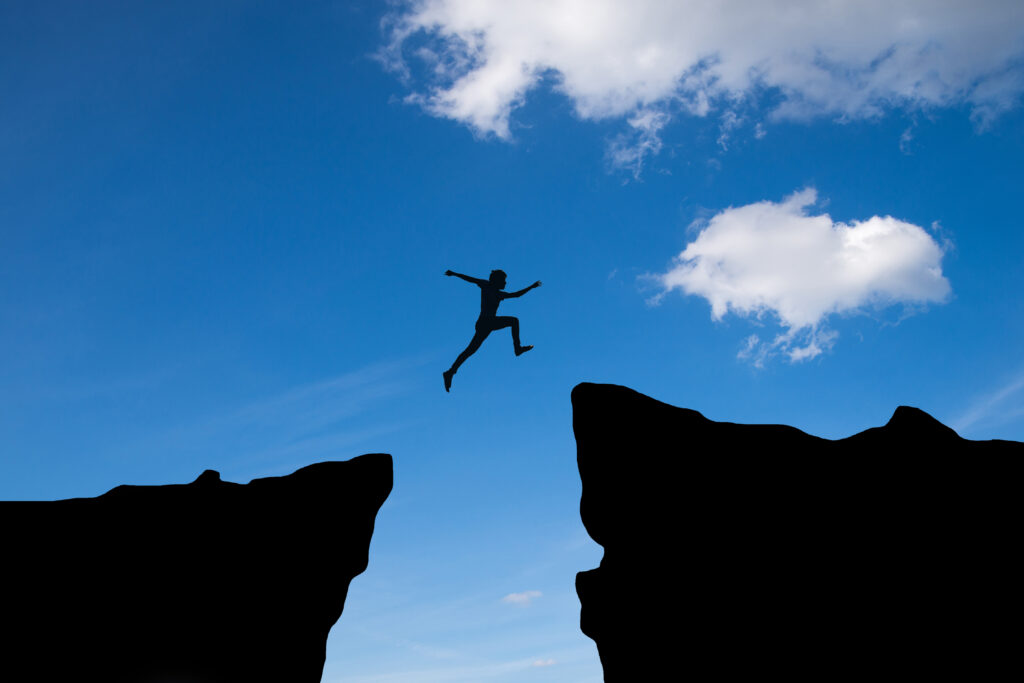Magnifying Inequities: Reflections on Indigenous Health and Physiotherapy in the Context of COVID-19

By: Allana Beavis & Priscilla Flett, Indigenous Health Co-Representatives, Global Health Division, Canadian Physiotherapy Association
COVID-19 is the most recent of many infectious diseases suffered by Indigenous Peoples living in North America. Since the arrival of Europeans more than 500 years ago, Indigenous Peoples have endured smallpox, the Spanish flu, tuberculosis, and H1N1, among others. In Canada, Indigenous Peoples have experienced high rates of infections during previous epidemics and pandemics due to social determinants of health, such as colonization and systemic racism.1
There has been great concern for increased transmission, infection, and poorer outcomes related to COVID-19 for Indigenous Peoples. Some Indigenous communities continue to experience food, water, and housing insecurity.1 Specifically, houses may be overcrowded and/or lack running water.2,3 These conditions make it exceedingly difficult to follow the public health recommendations of physical distancing and hand-washing.1,2,3 Indigenous Peoples also experience high rates of underlying health conditions that could predispose them to severe illness from COVID-19.3,4 Further, inadequate access to Personal Protective Equipment (PPE) has been a concern for Indigenous communities since the onset of the pandemic.3 An additional fear is losing sacred knowledge of their culture and history with the potential loss of an Elder in First Nation communities.
Indigenous leaders in Canada have protected their communities during the COVID-19 pandemic through self-determination and Indigenous public health practices. Such measures included restricting access to communities and imposing stricter regulations than regional governments, such as checkpoints and road closures.1 Subsequently, as of November 9, 2020, the COVID-19 case fatality rate for First Nations individuals living on reserve was approximately 20% that of the fatality rate in the general Canadian population.5
If we consider a regional example, however, the impact of structural inequities on Indigenous Peoples with relation to COVID-19 is more pronounced. The First Nations population in Manitoba was largely untouched by the first wave of COVID-19, owing to Indigenous leaders enforcing travel restrictions and lockdowns.4 The situation in Manitoba, however, has become much more unsettling during the second wave of the pandemic, with increasing numbers of positive cases across the province. As of November 26, 2020, the five-day test positivity rate was 22% on reserve and 19% off reserve for Indigenous Peoples living in Manitoba, which was greater than the overall provincial five-day test positivity rate of 15%.6 Even more disconcerting, First Nations peoples make up 50% of hospitalizations and one-third of intensive care beds related to COVID-19 in Manitoba.4
Indigenous Peoples in Canada are not only experiencing an increased burden and severity of COVID-19 illness; they are simultaneously contending with disruptions in health care services, including physiotherapy, that were lacking in the first place.7 This reality is even more striking for Indigenous Peoples living in remote northern communities, where health care providers fly in to provide community-based services. A consequence of the travel restrictions ordered by provincial and Indigenous governments is a further reduction in access to physiotherapy services.8
Tele-rehabilitation has been championed as a solution to the widening gap in access to physiotherapy services for Indigenous Peoples during COVID-19. There are, however, significant infrastructure barriers that limit equitable access to tele-rehabilitation. There are some Indigenous communities in rural and remote parts of Canada that do not have cellular service and, consequently, data; there are also others where the bandwidth cannot support internet video-calling.8 Many households do not have computers or reliable internet access.9 While tele-rehabilitation has the capacity to reach those with privileged access to the internet and personal devices, it leaves others behind.
Why do these health inequities exist? The definition of “health inequities” in and of itself provides the answer: health inequities are unfair, unjust, and preventable systematic differences in health.10 Health inequities are the sequelae of unjust social structures that privilege some and oppress others.11 Social structures, such as anti-Indigenous racism and colonization, permeate Canadian society and function to create and maintain inequities.11 Colonization, in particular, is regarded as a critical determinant of health for Indigenous Peoples globally.12 The physiotherapy profession itself, being that it is an institution embedded in a colonized society, is colonized.
The most important takeaway from this blogpost is that systems of power and oppression are socially constructed and can therefore be dismantled. We, as physiotherapists, need to collectively embrace our responsibility and ability to disrupt the “status quo” and decolonize our profession. We outline below the need to hold ourselves accountable to the Truth and Reconciliation Commission of Canada (TRC) and National Inquiry into Missing and Murdered Indigenous Women and Girls, take steps to fundamentally change as a profession, and improve our access to physiotherapy services.
Answer the Calls
The Final Report of the TRC was released in June 2015 as a result of the class action lawsuit against the Government of Canada for the forcible removal of thousands of Indigenous children from their families and their institutionalization in Indian Residential Schools.13 Seven (#18-24) of the 94 Calls to Action contained in the TRC Report were specific to health and stressed the importance of culturally safe and effective care.14 The TRC Calls to Action are intended to help Indigenous Peoples living in Canada to heal from the legacy of residential schools and move towards reconciliation.13
“Reconciliation is an ongoing individual and collective process, and will require commitment from all those affected including First Nations, Inuit, and Métis former Indian Residential School (IRS) students, their families, communities, religious entities, former school employees, government, and the people of Canada. Reconciliation may occur between any of the above groups.”15
Gasparelli et al. (2015) explain how physiotherapists, and our profession, are accountable to the Calls to Action.14 We advise that physiotherapists heed the wisdom of Gasparelli et al. (2015) by reading and raising awareness of the TRC Report and Calls to Action, providing physiotherapy services in a culturally safe manner, advancing truth telling within our profession, recruiting and retaining Indigenous physiotherapists, ensuring that physiotherapy training programmes incorporate anti-racism, cultural safety, and history of Indigenous peoples and rights, and fostering respectful research by and with Indigenous peoples.14
We also call on physiotherapists to read and respond to Reclaiming Power and Place: The Final Report of the National Inquiry into Missing and Murdered Indigenous Women and Girls, which was released in 2019 in response to the ongoing systematic violence and cultural genocide facing Indigenous women, girls, and 2SLGBTQQIA.16 Of the 231 Calls to Justice, 16 (3.1- 3.7, 7.1-7.9) are related to health and wellness. Health service providers, which includes physiotherapists, are specifically called upon to:
- Understand that Indigenous clients are experts in caring for and healing themselves;
- Support Indigenous-led health services and initiatives; and
- Provide stable community-based and Indigenous-centered health services (particularly for Indigenous women, girls, and 2SLGBTQQIA).16
The Calls further explicate the need for health service providers to undergo ongoing education on the history of colonization and anti-racism and the languages, culture, and health practices of local Indigenous peoples, as well as trauma-informed care and training Indigenous health service providers.16 The need to address the Calls to Justice is more urgent than ever in the context of COVID-19.17
Internet Rights Activism
The proposed use of tele-rehabilitation to enable access to physiotherapy services to remote and rural Indigenous communities during COVID-19 has to contend with significant infrastructure barriers. This disparity invites our profession to engage in internet rights activism.8 The CPA submitted a policy brief to the House of Commons of Canada in July 2020 recommending that the federal government provide urgent funding for the required infrastructure and programming to support access to electronic health technologies in rural, remote, and northern communities.7 On September 23, 2020, the federal government pledged in the Speech from the Throne to invest in rural broadband and expand capacity to deliver virtual health care.18 Of note, the province of Manitoba has also promised to improve connectivity, however, advised that this process will take time.19 We, as physiotherapists, can hold governments accountable to uphold the rights of those we serve.
Equitable Access to Physiotherapy
There is a scarcity of community-based physiotherapy services available to rural and remote Indigenous communities. The lack of access to physiotherapy services has been exacerbated by extended service disruptions during the COVID-19 pandemic. If our profession is to answer the Calls to Action and Calls to Justice outlined above, we need to mitigate this deepening inequity. We need to work on closing the gaps in health outcomes between Indigenous and non-Indigenous communities and ensure availability of Indigenous-centered and culturally safe physiotherapy services.15,16 We can collaborate with Indigenous communities and advocate for governments to make investments in community-based physiotherapy services. For example, the CPA’s policy brief recommended that the federal government work towards implementing the Calls to Action in order to improve Indigenous health.7
This is by no means an exhaustive discussion on the ways to advance health equity. It is a starting point. Other important work to do includes learning about the history of colonization in Canada, becoming anti-racist, and building capacity to practice critical allyship.11
Conclusion
The COVID-19 pandemic deepens and holds a magnifying glass to the health inequities faced by Indigenous Peoples living in Canada. Furthermore, the pandemic offers our profession the opportunity to examine inequities that exist with regard to access to physiotherapy for Indigenous Peoples, particularly for those living in remote fly-in communities.8 We cannot remain complacent with treating the downstream consequences of colonialism and racism. We can and are responsible to play a critical role in the reshaping of the larger social context in which physiotherapy practice is situated. We are all Treaty People.
Questions
- Can you think of ways that our profession has been complicit in the “status quo” (i.e., colonization and racism)?
- What is one thing you are going to do after reading this article to disrupt the “status quo”?
Acknowledgements
We thank Dr. Moni Fricke for her contributions to this publication.
Become a member
LoginBecome a member
Login